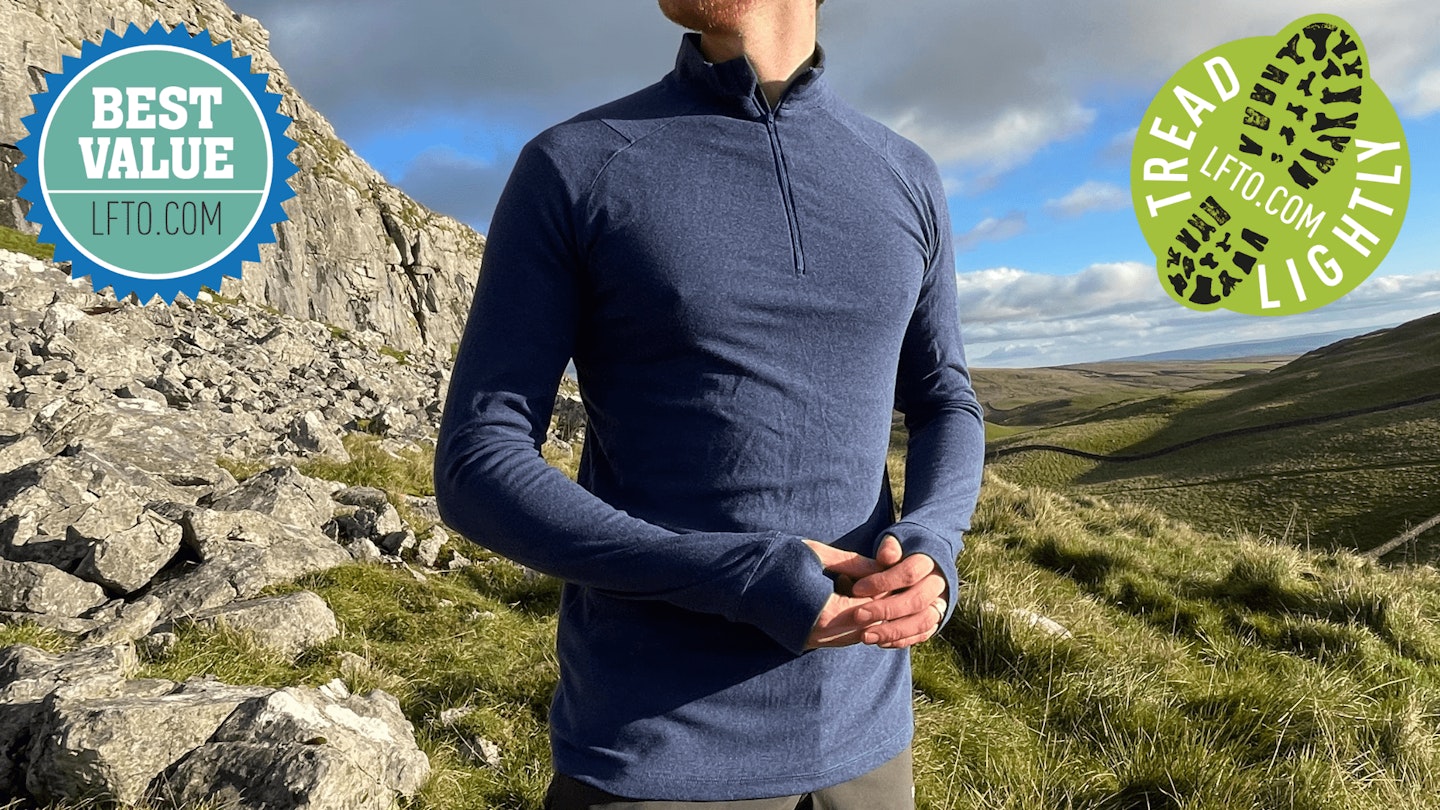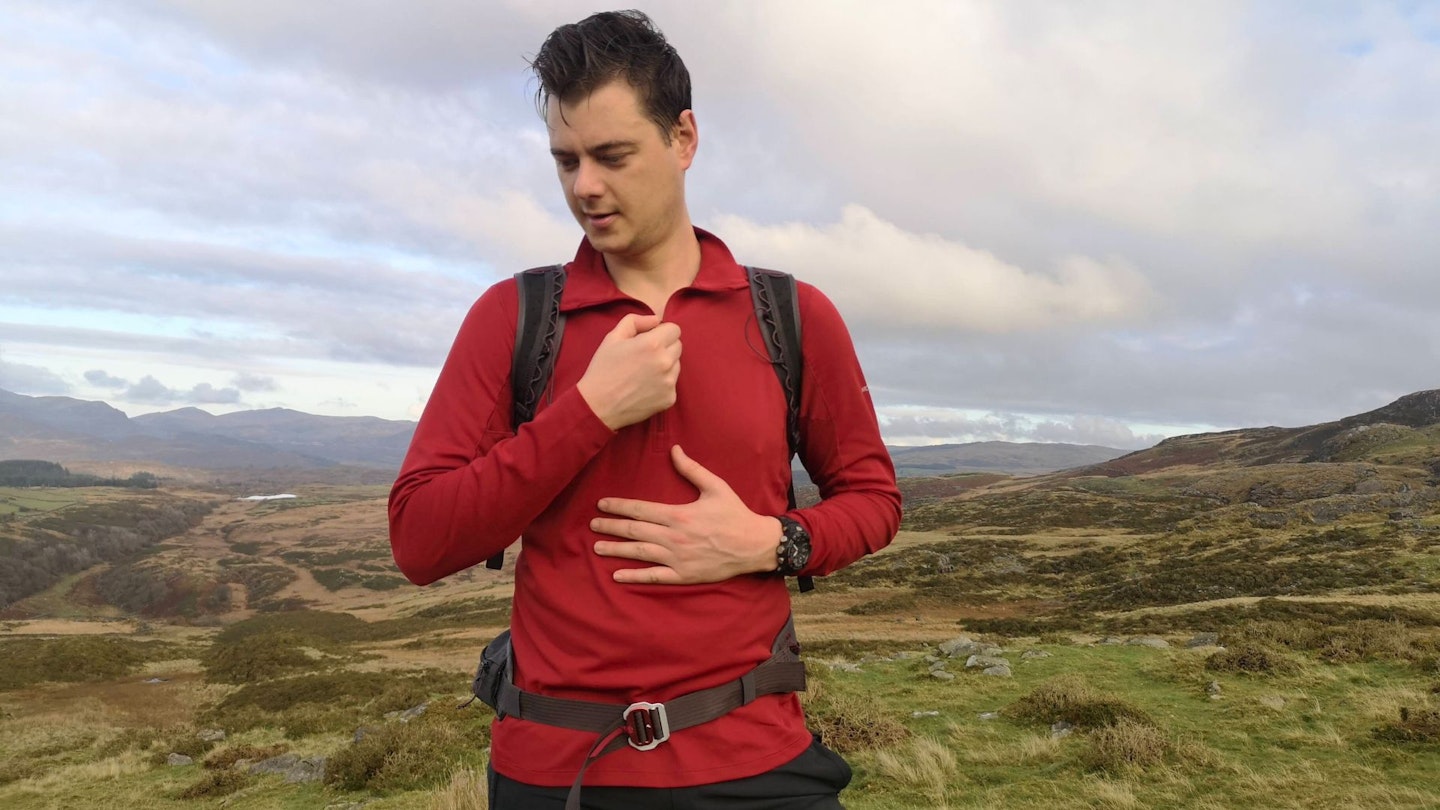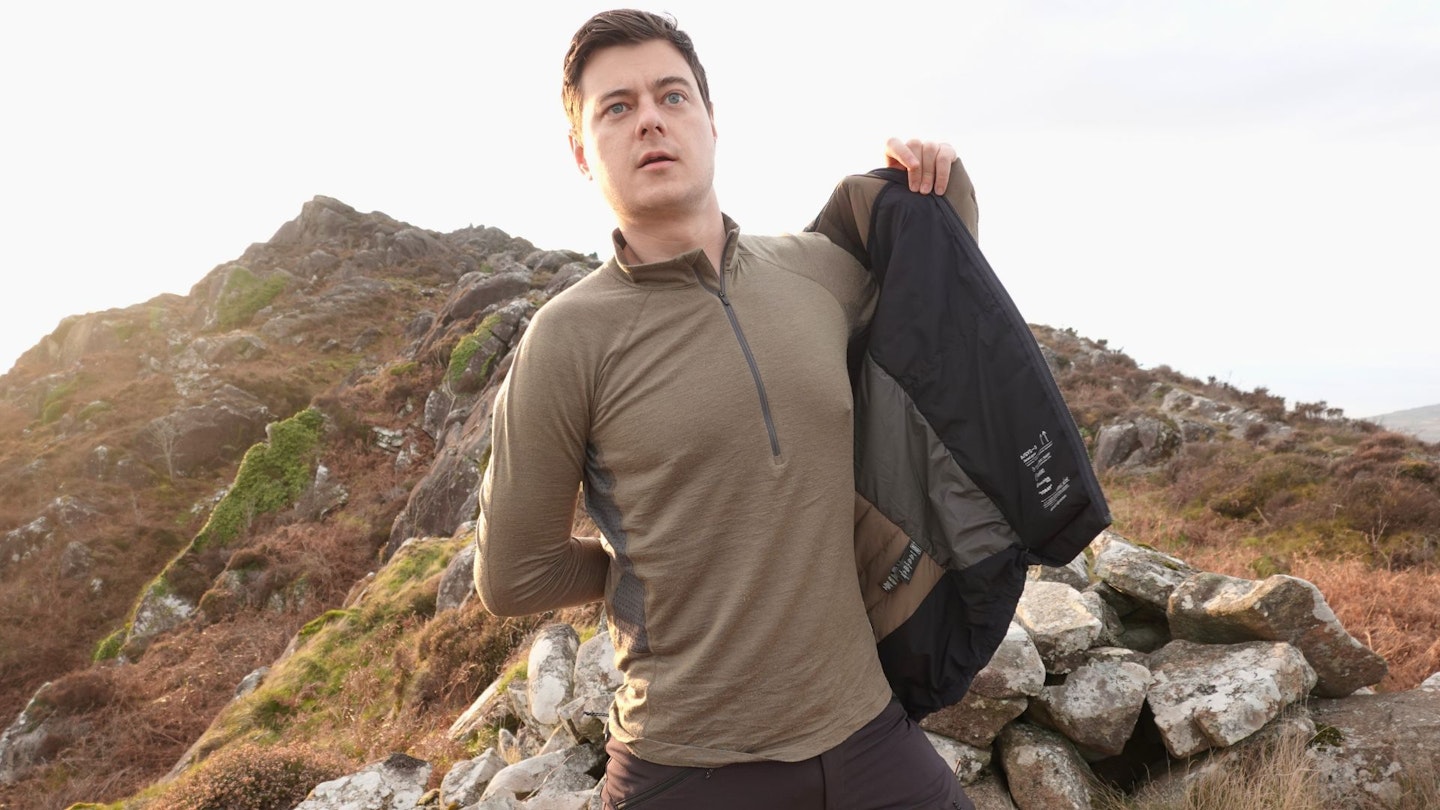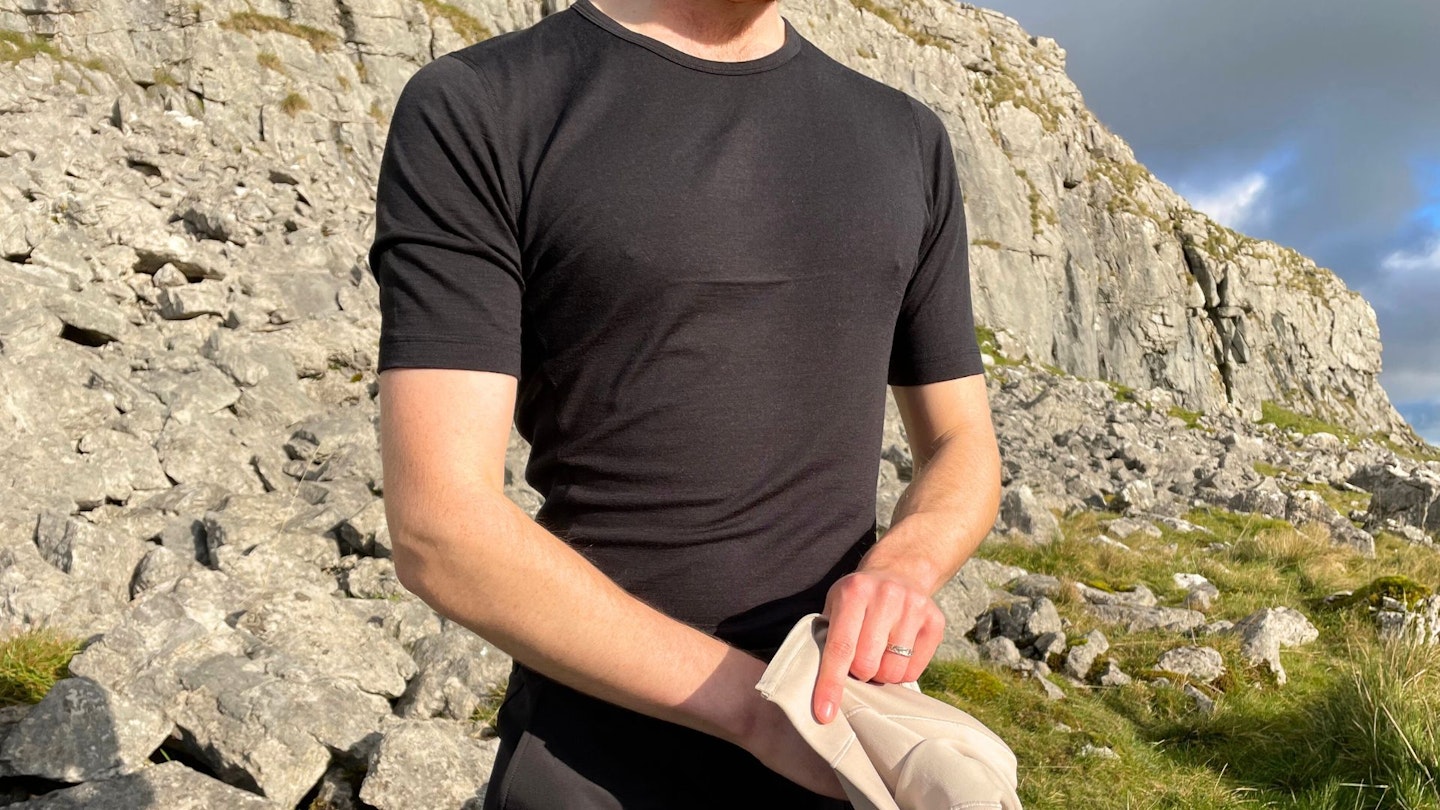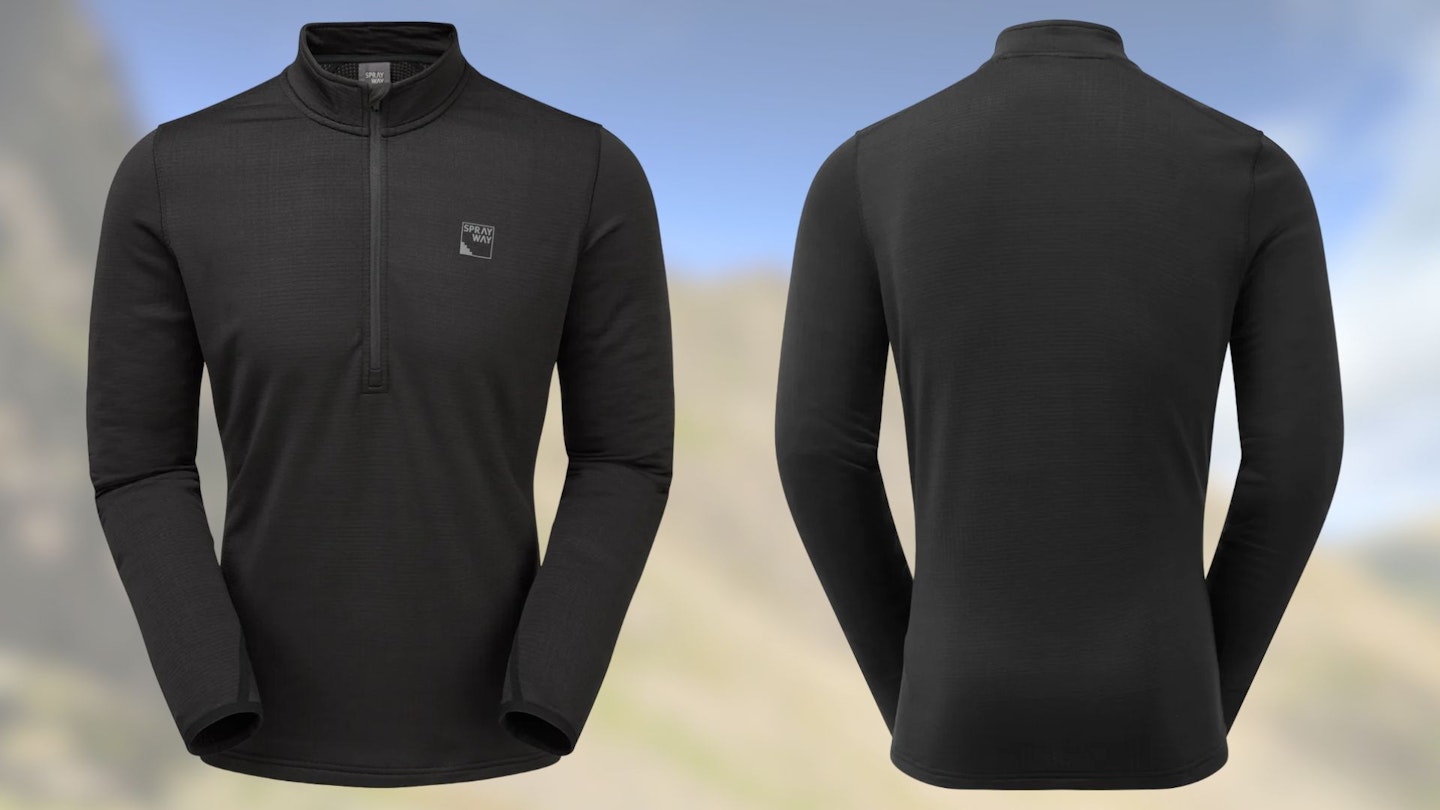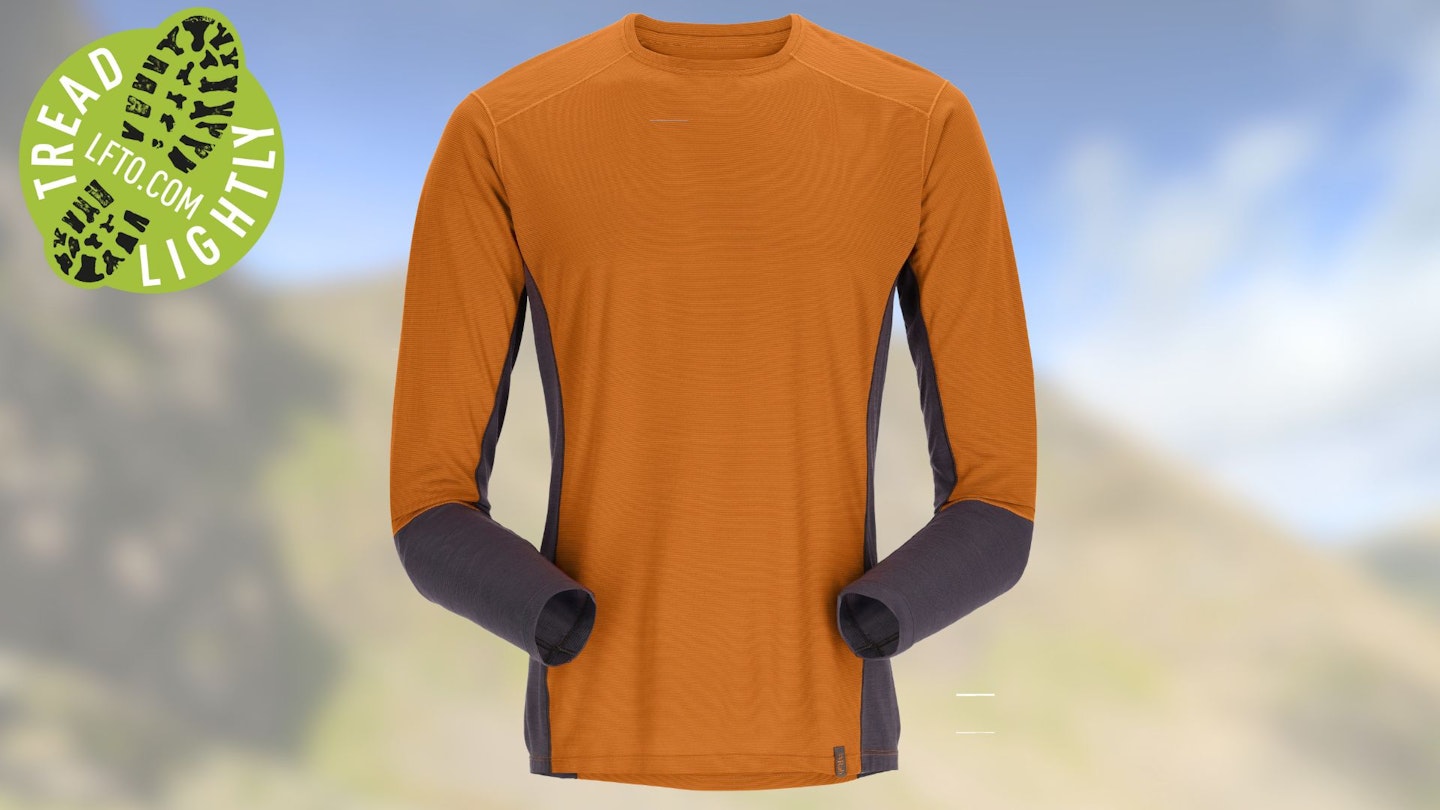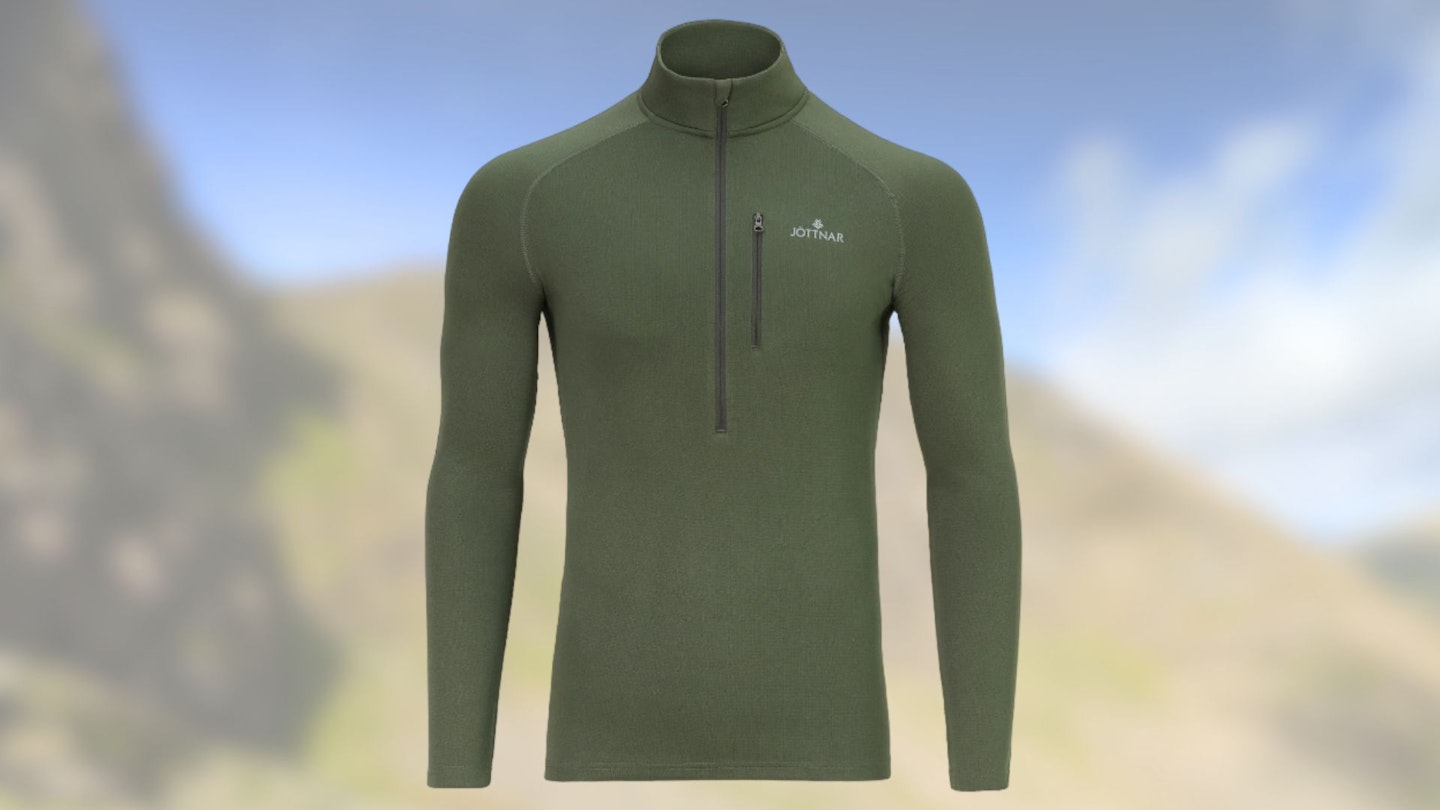Two hikers go on a trek into the hills; one is wearing a base layer, mid layer, and hiking jacket outer layer, the other is wearing a t-shirt and a thick jacket. While standing in the car park, hiker number two is very happy with their thick jacket, but they soon regret their wardrobe choice as they march up the hills.
The thick jacket traps too much warmth and they overheat. But as soon as they remove it, they’re too cold. Meanwhile, hiker number one is very comfortable. The layering of lighter garments makes it easier for the body to move perspiration away from the body, and it's easier to regulate body temperature because they can remove or add layers without quickly getting too cold or hot.
What are the best hiking base layers of 2025?
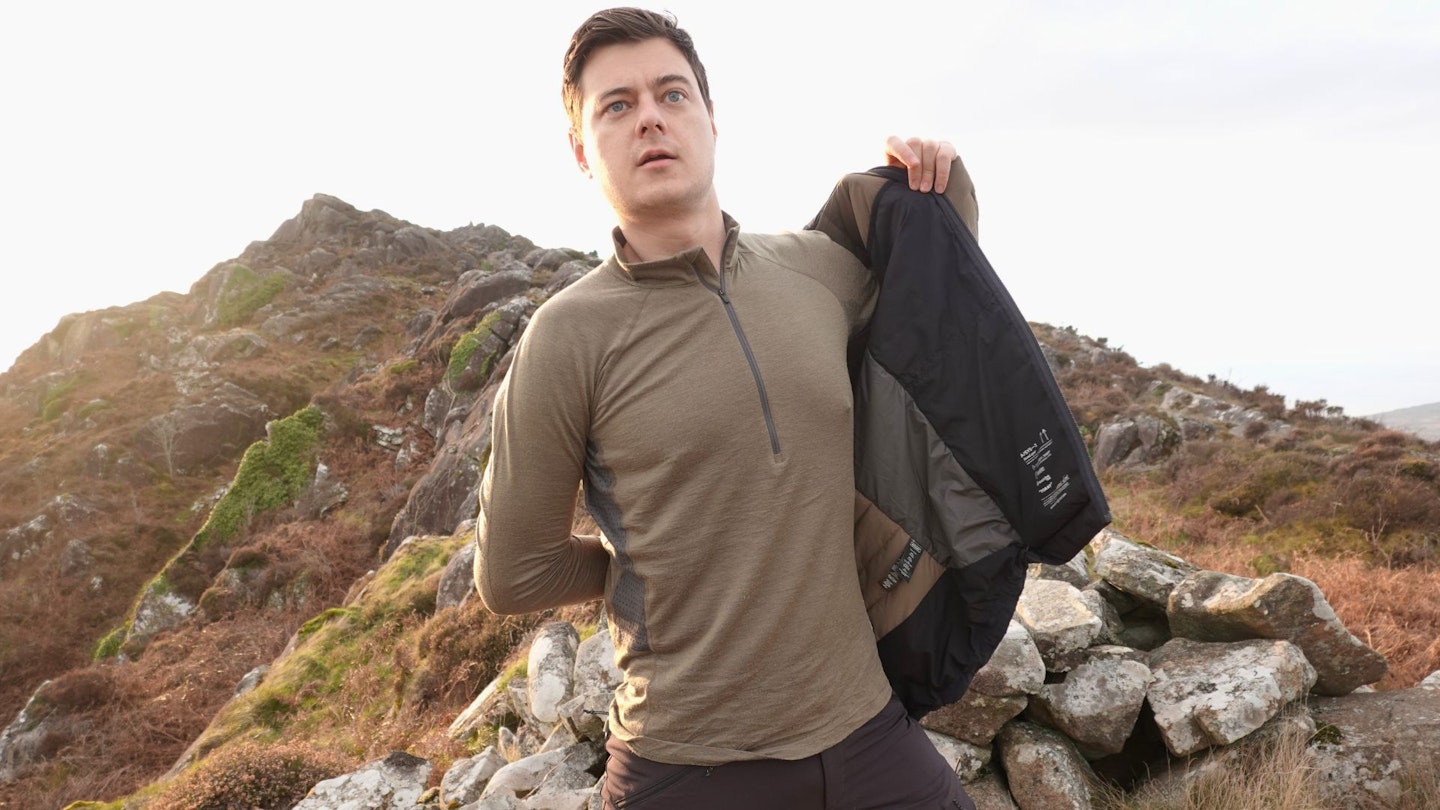
One of the first pieces of advice you’re told about hiking is 'layer up'. And the first piece of a layering system is the base layer. This is our guide to the best base layers to make your hiking experience much more comfortable.
Best in Test: Loomi Merino Long Sleeve Base Layer
Best value: BAM Bearah Thermo Base Layer
Best technical base layer: Artilect Darkhorse 185 Zoned ¼ Zip
Best for warmth: Helly Hansen Lifa Merino Midweight Half-Zip
How we tested the best base layers

When the winter is on the horizon and the temperature starts to drop, we can’t wait to reach for the base layers and build our winter layering system.
We test base layers for performance, comfort, and durability. We find out if their features and designs work in demanding real world environments, and also at other important things such as sustainability. For more information about how we test out kit, click here.
Best hiking base layers reviewed:
Our favourite material for base layers is merino because it's temperature regulating, naturally anti-odour, and soft. Where 100% merino base layers sometimes fall short is with durability, and because they're generally more expensive than synthetic options, the value isn't the best.
What many brands have done is employ the use of a merino-synthetic blend to address the issue of durability, and Scottish-based Loomi Activewear's take on this is the best we've come across so far.
We've used this base layer for running, hiking, and everyday use, and it's superb. We wore it for a week and it still didn't smell; on runs and hikes it was very breathable and effectively regulated body temperature; and it's durable.
We were curious how Loomi managed this and its founder told us about the surprisingly complex way the merino, nylon, and elastane fabrics are knitted together in a technique called BetaSpun.
The BetaSpun fabric feels thicker than a standard lightweight merino base layer, but is still stretchy and soft, and holds its shape very well. We liked skin-tight but unrestrictive fit, crew neck (we find zips can be annoying), and sleeves that aren't too long.
Loomi is so determined to make a long-lasting, high-performance base layer that addresses sustainability issues that plague the clothing industry. Loomi, you can give yourself a pat on the back, this is a brilliant base layer.
Pros
- Breathable and temperature regulating
- Anti-odour
- Durable
- Super comfort
- Suitable for any activity
- Made in Europe
Cons
- No zip version (although we prefer the crew neck)
| Weight | Not stated |
| Fabric | 67% merino wool, 26% nylon, 7% elastane |
| Unisex sizes | XS - XL |
This base layer is ideal for those with sensitive skin, particularly if you don’t like the clingy, static feel of synthetic fabrics or if even the finest merino wool feels a bit itchy. The fabric is a super soft and comfortable blend of bamboo and organic cotton, with some elastane for added stretch and improved shape retention.
Bamboo is naturally anti-bacterial and hypoallergenic. At 210gsm, this is heavier than most base layers, but provided us with decent warmth. Initially, the use of cotton in the blend was a slight concern to us. That’s because cotton holds moisture, easily becoming waterlogged and chilling the skin – hence the old Mountain Rescue adage ‘cotton kills.’
But actually, this base layer performed well. It felt a little damp under the arms at times but generally wicked efficiently and never got saturated, even during strenuous climbs.
The fit is excellent. It’s nice and long in the body and arms and has other practical features like thumb loops, a raised collar and a zip neck. It is also a very eco-friendly choice, which is a big plus. Though it probably wouldn’t be our first pick for the most demanding mountain days, it’s a very comfortable option for general hillwalking.
Check out the women's version here
Pros
- Soft
- Great fit
- Thumb loops
- Eco-friendly
Cons
- Doesn’t wick or dry quite as quickly as rivals
| Weight | 310g |
| Fabric | 210gsm luxe rib (68% bamboo viscose, 28% organic cotton, 4% elastane) |
| Men's sizes | S - 2XL |
| Women's sizes | 8 - 16 |
This hybrid base layer employs two different zoned fabrics, combining the benefits of natural and synthetic fibres. The main body is polyester, which has been treated with silver ions to neutralise body odour. Underarm panels are made from a blend of natural merino wool and hard-wearing nylon. It stayed noticeably fresh, even after several wears. As such, it’d be a great choice for multi-day backpacking trips. It also offers great wicking performance, plus decent warmth and durability despite its light weight.
It feels well made, which is evident in the details like low-profile merrow stitching, which resists snags better than conventional flatlock seams. There’s also a stand-up collar and a practical neck zip, though it’s a shame the cuffs lack thumb loops. The Rho has a little stretch but retains its shape well. Admittedly, it only provides moderate warmth, so works best in cool rather than very cold conditions.
But this base layer really excels in day-to-day wearability. It just looks and feels great, so became our go-to pick of all the options here. Having said all that, it’s still overpriced. And there’s no women’s version yet.
Pros
- Fair Trade Certified
- Great fit
- Odour resistant
- Soft and comfortable
- Durable
- Fast wicking
Cons
- No thumb loops
- No women’s version yet
| Weight | 170g |
| Fabric | Phasic ARII (100% polyester) w/ PFC-free DWR; Nucliex 150 (87% RWS-certified merino wool, 13% nylon) panels |
| Men's sizes | S - 2XL |
| Women's sizes | N/A |
Artilect is a relatively new US outdoor brand from Colorado. It makes a complete range of outerwear based on its A/SYS layering system, the foundation of which are its innovative Nuyarn base layers. This is a method of spinning that ‘drafts’ merino wool alongside a core filament fibre – here, nylon.
The results when compared to normal merino are impressive. The brand claims a 5x faster drying time, 35% more stretch, 35% more loft, 50% more durability and 20% less raw materials. Though it’s hard to assess all those, this layer does seem to punch above its weight in terms of warmth, while drying noticeably quicker than other merino rivals. The jury’s out on the durability claim – a lighter 125gsm Artilect base layer we previously tested didn’t last very long, though this thicker top does seem to be going the distance so far.
A zoned construction enhances breathability, with extensive perforated panels in areas like the back and underarms. Construction is first class, with flatlocked seams, thumb loops and a raised collar with a very deep neck zip. The latter is great for dumping heat fast. Fit-wise, the Darkhorse is snug and sculpted, maximising next-to-skin performance and thermal efficiency. It’s undoubtedly an impressive bit of kit, but it is expensive.
Check out the women's version here
Pros
- Warm
- Breathable
- Faster drying than pure merino
- Tougher than core spun merino
Cons
- Snug fit
| Weight | 260g |
| Fabric | Bluesign-approved 185gsm Nuyarn (85% non-mulesed merino, 15% nylon) |
| Men's sizes | XS - 2XL |
| Women's sizes | XS - XL |
Like the Artilect Darkhorse 185 Zoned ¼ Zip base layer, this one from Black Diamond uses Nuyarn. However, the merino used here is even finer – so the Black Diamond Long Sleeve Rhythm T-Shirt weighs just 121g.
For a garment so lightweight, we were very impressed with its performance. It’s excellent at regulating temperature and is superbly comfortable thanks to the soft fabric and high level of breathability and fast wicking. You could use this for trail running as well, if you wanted to.
The fit is slim, rather than skin tight like many base layers. So, it is quite versatile as a result, but not ideal for really cold conditions.
Since it’s so lightweight, it doesn’t feel particularly rugged. Nuyarn is supposed to be more durable than core spun merino, and indeed we’ve found it to be, but in such as lightweight garment that doesn’t make it bombproof.
Check out the women's version here
Pros
- Excellent temperature regulation
- Natural anti-odour
- Very soft
- Stretchy
- Very lightweight
Cons
- Not the warmest base layer
- Not the most durable
| Weight | 121g |
| Fabric | 90gsm Nuyarn (57% nylon, 43% merino) |
| Men's sizes | S - XL |
| Women's sizes | XS - XL |
This short sleeve is part of a wider Adidas Terrex merino base layer range of varying weights and including leggings.
On test, this provided the temperature regulating and anti-odour properties we love merino for. Being a mid-weight fabric, it was decently warm too, and excels in quite cold (and wet) conditions.
A lot of short sleeve base layers go too far with the short sleeves. We liked the Xperior fit because the sleeves covered most of the upper arm. We liked the fit, which is slim, but not as tight as some.
Being 100% merino, the price reflects that, but it's very well made, you do get a lot of performance in return.
Check out the women's version here
Pros
- Good temperature regulation
- Natural anti-odour
- Good sleeve length
Cons
- Not the warmest base layer
- Not the most durable
| Weight | Not stated |
| Fabric | 200gsm merino |
| Men's sizes | XS - 2XL |
| Women's sizes | 2XS - XL |
Norwegian brand Helly Hansen has been making base layers since the early 1970s. Today, its Lifa layers featuring those distinctive arm stripes are still worn by hikers, skiers, mountaineers and sailors alike. The extensive range includes synthetic, merino wool and hybrid options – including this practical midweight merino option. It’s more than just merino alone though, being lined with fast-wicking polypropylene fibres for superior moisture management.
It proved a great layer for active use in cold weather. We wore just this under a shell on sub-zero winter mountain days and stayed toasty. The two-layer construction seems to outperform most merino fabric blends, as well as the zoned construction of other hybrid layers. It’s comfortable too, not at all itchy with a nice fit. It isn’t baggy but doesn’t feel like it’s been sprayed on either. We’d like a little more length in the arms and body to keep wrists and lower back fully covered during dynamic activity, but this won’t be an issue unless you’re especially long limbed.
There aren’t any thumb loops either, and we’d like a deeper neck zip for ventilation. For durability this layer held up well though, still looking and feeling great after several wears and washes.
Check out the women's version here
Pros
- Good cut
- Very warm
- Wicks well
Cons
- Lacks thumb loops
| Weight | 390g |
| Fabric | 2-layer LIFA construction (57% ZQ-certified merino wool, 43% polypropylene) |
| Men's sizes | S - 2XL |
| Women's sizes | XS - XL |
This cosy synthetic base layer is made from grid stretch fleece that offers great next-to-skin warmth and softness but also wicks extremely well to keep you dry and comfortable. The polyester fabric has a little elastane in the mix to aid freedom of movement. It’s a shame there’s no recycled content though. However, Sprayway is a Fair Wear Foundation member.
In terms of fit, we found it’s reasonably trim, with plenty of length in the arms and handy thumb loops to prevent sleeves riding up. Stretch-bound cuffs hug the wrists, and a raised collar guards against chills. The half zip at the neck isn’t the deepest but did offer us a little ventilation if we started to overheat.
The smooth face of the fabric also slides easily under other layers. Seams are flatlocked, but perhaps a little bulkier than rivals, and don’t feel truly invisible like some. We were conscious of the two seams across the shoulders when wearing a pack, for example. Otherwise, it performed well on test in terms of warmth and moisture management, especially on colder days.
The only real drawback we found is one common to many cheaper synthetic layers – it starts to smell a bit after heavy use, and lacks any in-built odour treatment to counteract this. Also, though it’s a minor niggle, the logo started to peel off the chest after a few washes.
Check out the women's version here
Pros
- Warm
- Soft
- Fast wicking
- Thumb loops
Cons
- Awkward shoulder seam placement
- No odour control treatment
| Weight | 250g |
| Fabric | CoreC Grid (95% polyester, 5% elastane) |
| Men's sizes | S - 2XL |
| Women's sizes | 8 - 18 |
More highly recommended base layers we've tested
Rab’s Syncrino is a 125gsm merino blend base layer tee, made from recycled polyester and merino wool. It offers more warmth than a similar weight synthetic top but has less insulating ability than any of the other options here – you might want a cosier and chunkier layer if you tend to feel the cold.
The fit is fairly relaxed, offering good freedom of movement but perhaps at the slight cost of thermal efficiency. On the other hand, that means it’s a bit more wearable and versatile if you just wear it as a long-sleeved T-shirt in milder spring or autumn weather, rather than as a technical layer. It is soft and comfortable, with minimal itch factor. Seams are low profile, sensibly placed and well finished. The body and sleeves are both nice and long, ensuring full coverage. There are no thumb loops and just a simple crew neck, which does leave the nape a little exposed.
But on test, this layer performed well in the mountains. It’s stretchy enough to permit dynamic movement. It wicks fairly well too, though we were conscious of some dampness under the arms and across our back when wearing a pack. Still, it dried off reasonably quickly. It didn’t pick up unpleasant odours either, even after a week’s continual wear.
Check out the women's version here
Pros
- Soft and comfortable
- Odour-resistant
- Versatile cut
- Rab a Fair Wear Foundation with 'Leader' status
Cons
- Not the warmest
- No thumb loops
| Weight | 170g |
| Fabric | Syncrino 125 (52% partially recycled polyester, 47% merino) |
| Men's sizes | S - 2XL |
| Women's sizes | 8 - 16 |
Jöttnar is a British brand with a Scandi name, founded by two former Royal Marines Commandos. It has built a rep for uncompromising technical mountain gear, and this base layer is no exception.
The Erling has a slim, sculpted fit to maximise next-to-skin performance, with plenty of length in the arms and body ensuring full coverage even during dynamic activity. All the features you’d expect from a technical layer are present and correct: you get thumb loops, a stand-up collar, a very deep neck zip for venting, and unusually, even a zipped chest pocket. Flatlocked seams are well placed to avoid irritation. The fabric is a midweight 205gsm polyester that offers plenty of stretch. Unlike cheaper synthetics, it has a Polygiene anti-microbial treatment to ward off odour too.
On test, there was lots to like. It wicks fast, dries quickly and offers enough warmth for cool to cold conditions. All in all, if you’re looking for a trim-fitting technical layer and don’t mind paying a bit more for quality, this ticks all the boxes.
Pros
- Soft and comfortable
- Odour resistant
- Durable
- Fast wicking
Cons
- Snug fit
- Pricey for a synthetic layer
- No women’s version yet
| Weight | 280g |
| Fabric | 205gsm polyester w/ polygiene anti-odour treatment |
| Men's sizes | S - XL |
| Women's sizes | N/A |
What to look for in hiking base layers
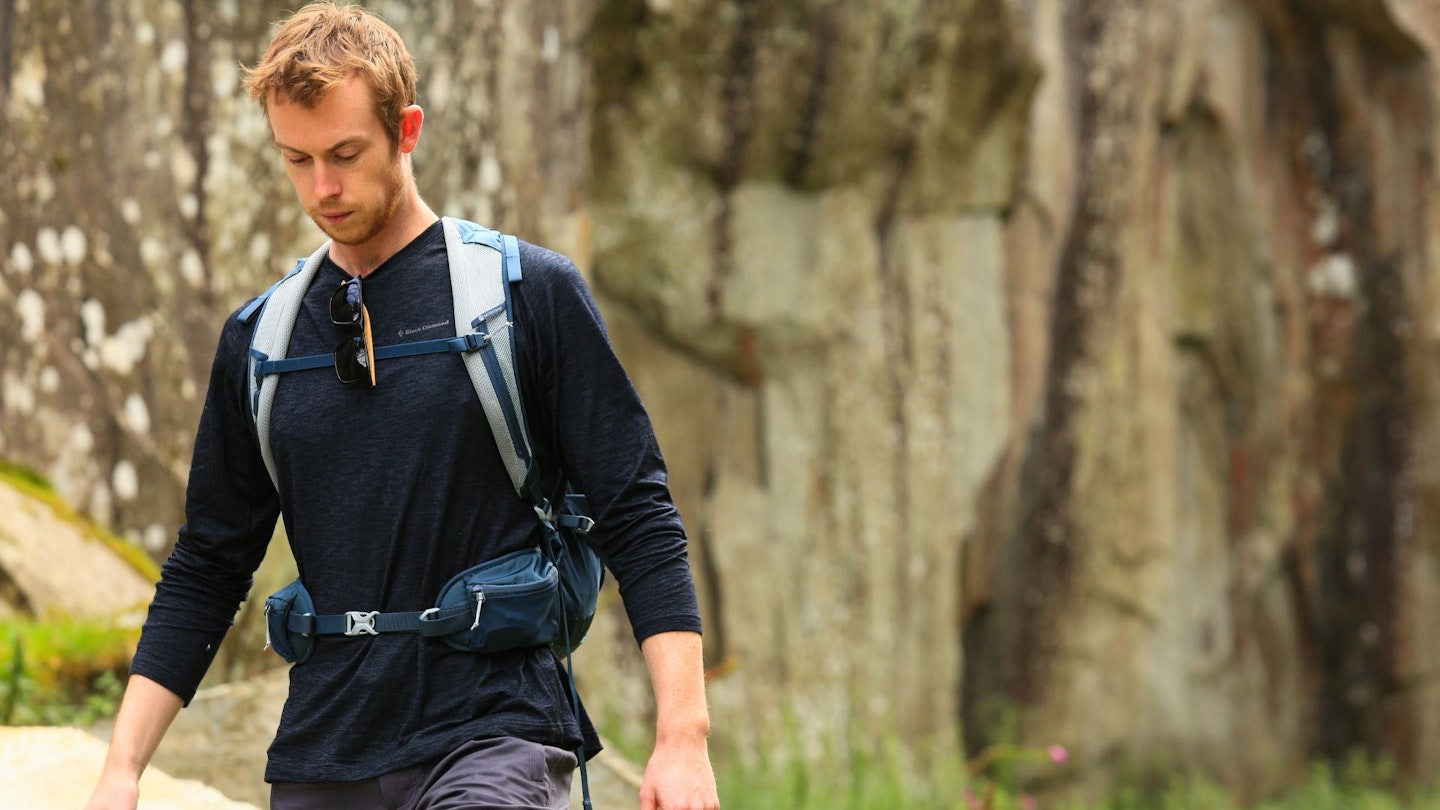
What fabric is best for base layers?
Merino
Merino wool is soft and comfortable, regulates temperature superbly and is naturally anti-bacterial, meaning it resists odours even after prolonged wear. However, it is more expensive and less durable than synthetic fabrics. Check that the wool is responsibly sourced.
Synthetics
Synthetic base layers are usually made from polyester, polypropylene or polyamide (nylon). These fibres wick moisture well, dry quickly and are very durable. Their major downside is that they start to smell after prolonged wear, though many brands now use anti-odour treatments to guard against this.
Bamboo
Bamboo is even softer than cotton, with superior wicking and warmth for weight. However, its main benefit is its sustainability. It is a fast-growing natural fibre that is far less resource intensive to produce compared to merino wool. Nor is it derived from petrochemicals like synthetic fibres.
Hybrids
Hybrid base layers use a blend of yarns to maximise the benefits of different fibres or feature zoned construction, employing fabric panels of different types.
Why not cotton?
Cotton absorbs moisture and then holds onto it, keeping it next to your skin. This lack of wicking and slowness to dry may not be a problem when the weather is warm, but if the temperature drops or the wind picks up it can become chilling very quickly. Cotton is best avoided in the varied and changeable climate of the mountains.

What makes a base layer more comfortable?
Garment patterning and design can make a huge difference to comfort, as well as freedom of movement. Look for flatlock stitching and offset seams to reduce chafing or irritation.
What makes a base layer breathable?
This depends on various factors, including fabric type and quality, weight and weave. But lighter base layers are generally more breathable and therefore better suited to high-output activities.
Are base layers all the same thickness?
Base layers are generally classed as lightweight, midweight or heavyweight. Fabric weight is sometimes expressed in gsm (grams per square metre). A higher gsm usually means a thicker and more durable fabric.
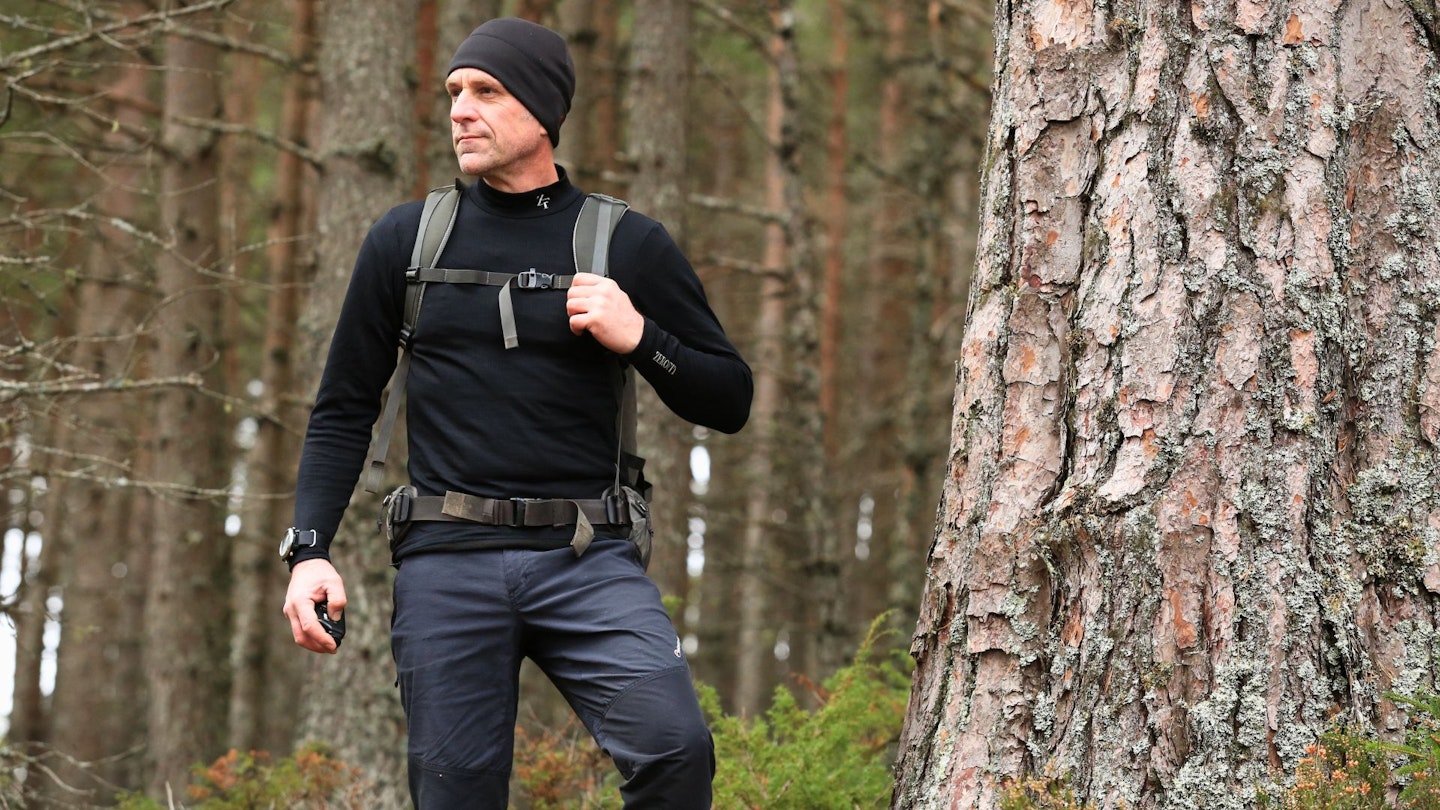
Are all base layers anti-odour?
Natural fibres like bamboo and merino are naturally odour resistant. In contrast, synthetic layers were once notorious for their pong. But fabrics are now often treated with anti-microbial technologies such as Polygiene to help prevent the growth of odour-causing bacteria.
Should I get a base layer with a zip?
Quarter or half zip-neck layers offer some ventilation and typically have a raised collar for added neck protection. But crew necks are usually cheaper and can feel more comfortable when worn as part of a layering system.
Are thumb loops necessary?
A useful but often overlooked feature, thumb loops help to stop sleeves riding up and exposing your wrists in colder conditions.
About the author
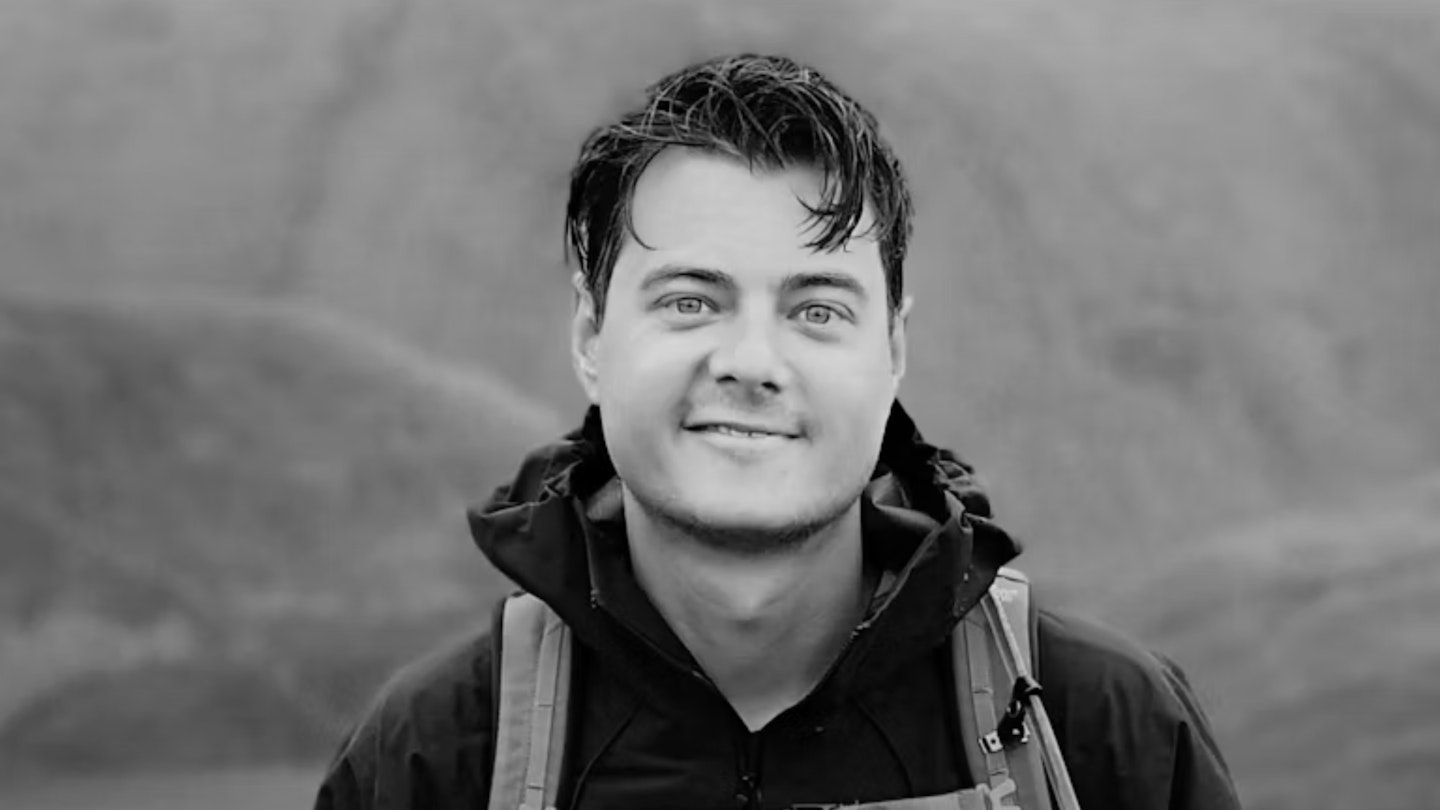
Matt Jones is a freelance gear testers for Live For The Outdoors and Trail magazine. He's walked several long-distance backpacking trails in New Zealand, the USA and throughout the UK, and is one of the most experienced and respected outdoor gear testers out there.


